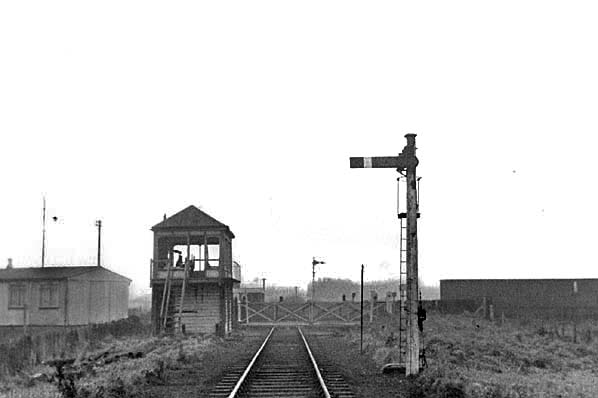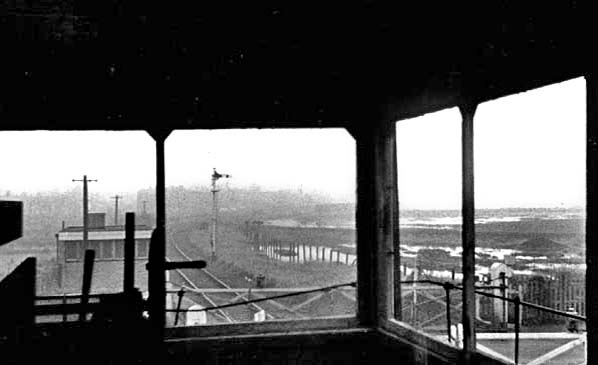
Station Name: BECKTON[Source:
Nick Catford]
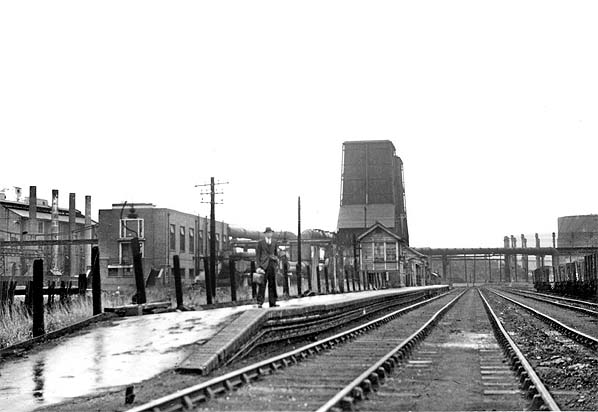
Beckton
station looking east towards the gasworks in the 1930's.
Photo from Lens of Sutton Collection c/o Chris Turner GWS Didcot 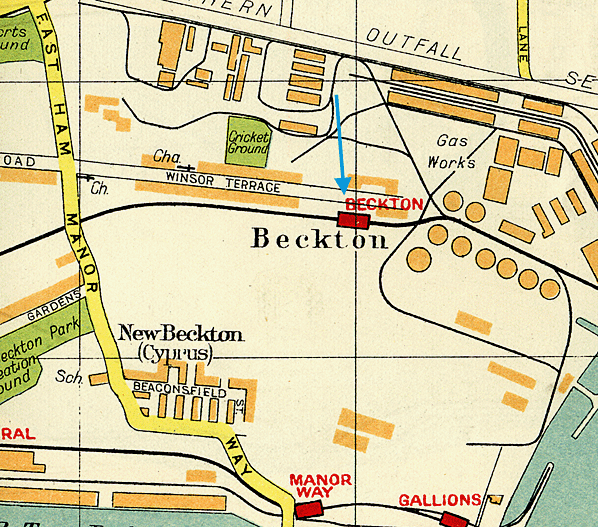 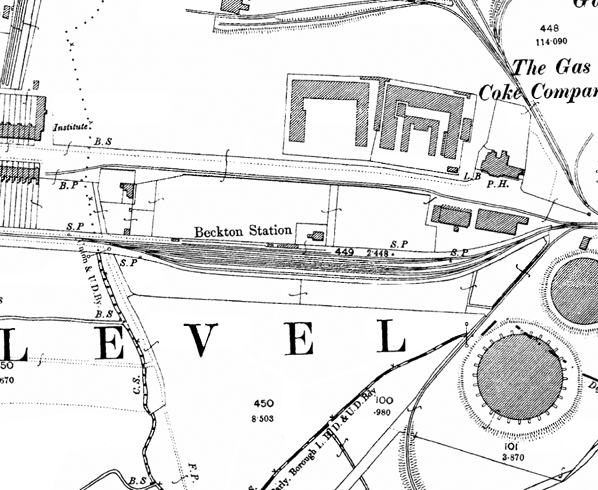
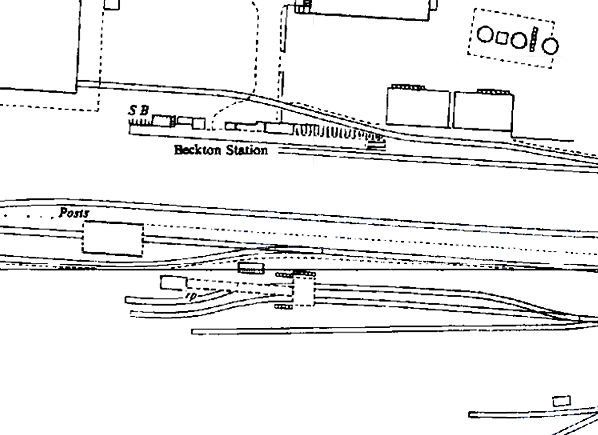
1962 1,2500 OS map still shows Becton station even though it has been closed for 22 years. Part of the platform is intact as are the station buildings and signal box. A siding runs into the platform from the east, The track layout around the station has completely changed, one of the lines runs through a shed.
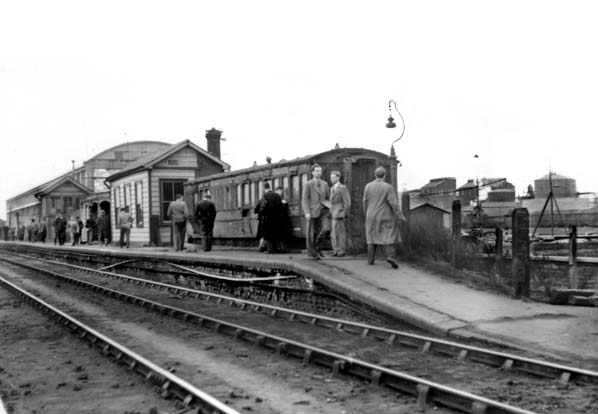 Becton station probably seen during a railtour in the 1950s. The closest building is the booking office. Between that at the signal box there is a small open fronted waiting shelter.
Photo from John Mann collection old3.jpg)
Looking east towards the site of Becton station from the track at the back of
Winsor Terrace in March 1962 Photo by Ben Brooksbank old3.jpg)
R.C.T.S. (London Branch) East London No.3 Rail Tour at Beckton on 6 October 1962. Taken from the same position opposite Winsor Terrace as the picture above. This tour was hauled by Class 15 D8236. This loco remained in service until April 1969.
Photo by David Pearson 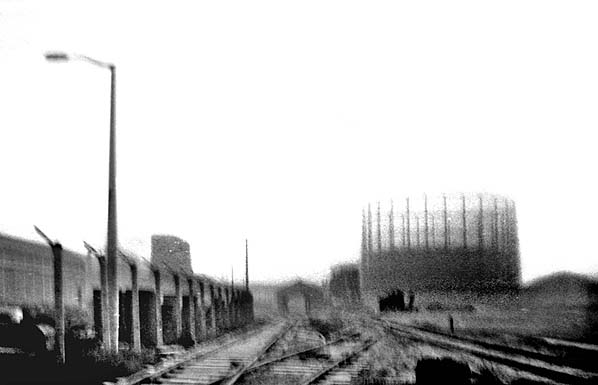
Very poor quality view looking east towards the site of Becton station in November 1967. The actual site is out of view almost opposite the shed (seen on the 1962 map above) in the middle distance.
Photo by Nick Catford 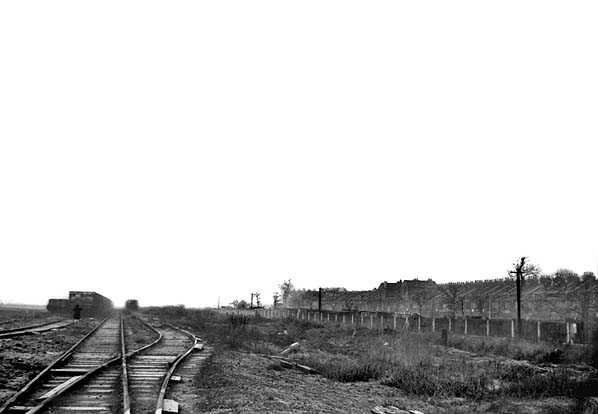
Looking west along the Becton branch from the same position as the picture above in November 1967. Winsor Terrace is seen on the right.
Photo by Nick Catford 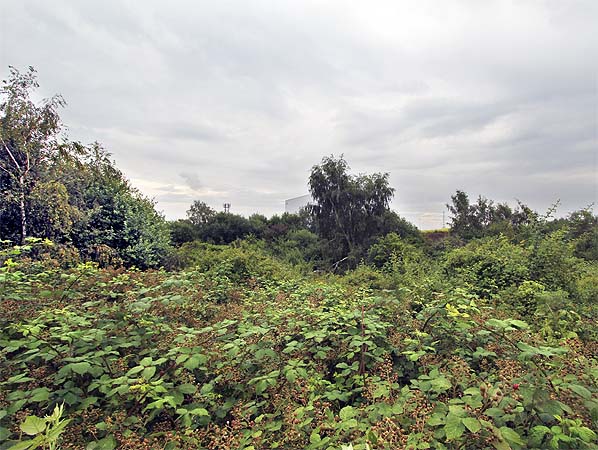
 Home Page Home Page
|
 Freight traffic into the gasworks started on 14th October 1873
and from 17th March 1873 a non-timetabled workmen's service
was provided to a station at Beckton close to the entrance to
the works on the south side of Winsor Terrace which had been
built for gas works employees. From 18th March 1874 it became
a public passenger station with the line being leased to the
Great Eastern Railway. Although a public station it was intended
primarily for the workforce with trains timed to coincide with
shift changes. A separate private station named Beckon Gas Works
was sited within the works. This is listed in the Railway Clearing
House handbook for 1895 but it had gone by 1904. A goods service
operated to Beckton but this was withdrawn during March 1930.
Freight traffic into the gasworks started on 14th October 1873
and from 17th March 1873 a non-timetabled workmen's service
was provided to a station at Beckton close to the entrance to
the works on the south side of Winsor Terrace which had been
built for gas works employees. From 18th March 1874 it became
a public passenger station with the line being leased to the
Great Eastern Railway. Although a public station it was intended
primarily for the workforce with trains timed to coincide with
shift changes. A separate private station named Beckon Gas Works
was sited within the works. This is listed in the Railway Clearing
House handbook for 1895 but it had gone by 1904. A goods service
operated to Beckton but this was withdrawn during March 1930.
 The nearby Gallions branch was damaged by German bombing during
the early afternoon of 7th September 1940 and Beckton suffered
at the same time but the line was repaired and the December
1940 timetable showed one train each way per day. This passenger service
was finally withdrawn from the station on 29th December 1940.
The nearby Gallions branch was damaged by German bombing during
the early afternoon of 7th September 1940 and Beckton suffered
at the same time but the line was repaired and the December
1940 timetable showed one train each way per day. This passenger service
was finally withdrawn from the station on 29th December 1940. Today, most of the line to Beckton has been taken up and is now a public footpath, known as the 'Beckton Corridor'. A short stretch of the line east of Woolwich Manor Way has been reused as the final part of the Beckton branch of the Docklands Light Railway. Beckton DLR station is located several hundred yards west of Beckton railway station; "eastbound" trains from Gallions Reach loop back round over the old line in the reverse direction, entering the station from the east.
Today, most of the line to Beckton has been taken up and is now a public footpath, known as the 'Beckton Corridor'. A short stretch of the line east of Woolwich Manor Way has been reused as the final part of the Beckton branch of the Docklands Light Railway. Beckton DLR station is located several hundred yards west of Beckton railway station; "eastbound" trains from Gallions Reach loop back round over the old line in the reverse direction, entering the station from the east.